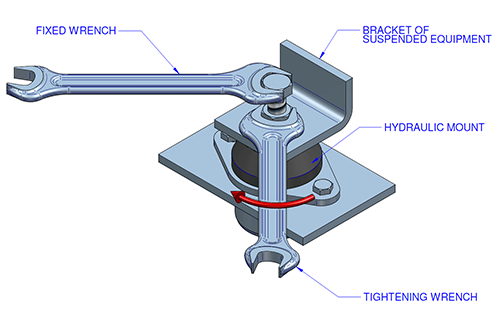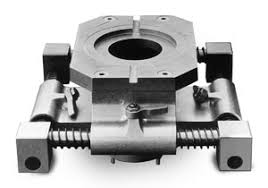Seismic base isolation is a crucial technique in modern structural engineering for mitigating the impact of earthquakes on buildings. By implementing seismic base isolation, buildings can better withstand seismic forces, ensuring improved safety for occupants. This paper will explore the application of seismic base isolation in building design and construction, and its potential to significantly enhance building safety in earthquake-prone regions.
Implementing seismic base isolation involves using various techniques and devices to decouple a building's foundation from the ground motion during an earthquake. This can include using flexible bearings, sliders, or dampers to absorb and dissipate the energy generated by seismic waves, reducing the impact on the structure above. By implementing seismic base isolation, buildings can experience significantly reduced damage and increased safety during seismic events, protecting both the structure and its occupants. This technology has been increasingly utilized in earthquake-prone regions to improve building resilience and mitigate the potential impact of earthquakes.
Implementing seismic base isolation involves using various techniques and devices to decouple a building's foundation from the ground motion during an earthquake. This can include using flexible bearings, sliders, or dampers to absorb and dissipate the energy generated by seismic waves, reducing the impact on the structure above. By implementing seismic base isolation, buildings can experience significantly reduced damage and increased safety during seismic events, protecting both the structure and its occupants. This technology has been increasingly utilized in earthquake-prone regions to improve building resilience and mitigate the potential impact of earthquakes.
Understanding the Principles of Seismic Base Isolation

Understanding the principles of seismic base isolation involves studying the fundamental concepts of earthquake engineering and structural dynamics. This includes the behavior of buildings and structures under earthquake loads, the characteristics of seismic waves, and the design of base isolation systems to mitigate the effects of seismic forces. It also involves learning about the various types of base isolation devices, such as elastomeric bearings and sliding isolators, and their applications in different types of structures. Additionally, understanding the principles of seismic base isolation requires knowledge of international standards and guidelines for designing and implementing base isolation systems to ensure the safety and stability of buildings and infrastructure during seismic events. Overall, gaining a thorough understanding of the principles of seismic base isolation is crucial for engineers and designers involved in earthquake-resistant structural design and retrofitting projects.
Benefits of Seismic Base Isolation for Structures

Seismic base isolation is a technique used in structural engineering to mitigate the impact of ground motion during an earthquake. It involves inserting flexible bearings or isolators between the foundation of a structure and the superstructure, allowing the building to move independently from the ground motion. Some benefits of seismic base isolation for structures include: 1. Improved earthquake resistance: Base isolated structures are better able to withstand the lateral forces generated by an earthquake, reducing the risk of structural damage or collapse. 2. Protection of occupants and contents: By reducing the transfer of seismic forces to the building, base isolation helps to protect the people and assets inside. This can be especially important in critical facilities such as hospitals, data centers, and emergency response buildings. 3. Preservation of historic structures: Base isolation can be used to retrofit older buildings, helping to preserve their architectural and historical significance by making them more resilient to seismic hazards. 4. Reduced repair and downtime: By minimizing structural damage during an earthquake, base isolation can lower the cost and time required for repairs, allowing buildings to return to operation more quickly after a seismic event. 5. Long-term cost savings: While the initial investment in base isolation may be higher than traditional seismic design and construction methods, the potential for reduced damage and downtime can lead to cost savings over the lifespan of a building. Overall, seismic base isolation offers a valuable means of protecting buildings and their occupants from the destructive effects of earthquakes, making it an important consideration in seismically active regions.
Designing Buildings with Seismic Base Isolation in Mind

Designing buildings with seismic base isolation in mind involves the use of various techniques and materials to reduce the impact of earthquakes on structures. This may include incorporating flexible or sliding bearings into the building's foundation, using dampers to absorb seismic energy, and adhering to specific building codes and regulations for earthquake-prone areas. The goal of seismic base isolation is to improve a building's overall resiliency and minimize damage during an earthquake, ultimately ensuring the safety of its occupants. This approach requires careful consideration of a building's design and construction from the early stages of planning to implementation.
The Role of Seismic Base Isolation in Earthquake Safety

Seismic base isolation is a technique used to protect buildings and infrastructure from the damaging effects of earthquakes. It involves placing a flexible or shock-absorbing system between a structure and the ground, allowing the building to move independently of the ground motion during an earthquake. This helps to reduce the transfer of seismic forces to the building, thus minimizing structural damage and improving overall earthquake safety. Base isolation has been used in various buildings and structures worldwide, including bridges, hospitals, and cultural heritage sites, to mitigate the impact of earthquakes and protect lives and property.
Implementing Seismic Base Isolation Techniques in Construction
Seismic base isolation is a construction technique designed to minimize damage to buildings during an earthquake. It involves installing flexible bearings or isolators between the building and its foundation to absorb seismic energy and reduce the transmission of ground motion to the structure. This technique has been implemented in a variety of structures, including high-rise buildings, bridges, and critical facilities such as hospitals and power plants. Seismic base isolation can significantly improve a building's resilience to earthquakes and is an important consideration in earthquake-prone regions. It requires careful engineering and construction to ensure the isolators are properly installed and maintained for optimal effectiveness. The use of seismic base isolation can result in higher upfront construction costs but may ultimately save money by reducing damage and downtime following an earthquake.
Case Studies of Successful Seismic Base Isolation Projects
types of vibration isolation
- The Seismic Base Isolation (SBI) technology has been successfully implemented in various projects around the world. - One notable case study is the Tokyo Metropolitan Government Building in Japan, where SBI was used to protect the building from earthquakes. - Another example is the San Francisco City Hall, which was retrofitted with SBI to enhance its seismic resilience. These case studies highlight the effectiveness of SBI in mitigating the impact of earthquakes on critical infrastructure and buildings. The successful implementation of SBI in these projects has demonstrated its potential to save lives and prevent catastrophic damage during seismic events.
Challenges and Advances in Seismic Base Isolation Technology<
vibration isolation types/h2>
Seismic base isolation technology is continually evolving to address the challenges posed by natural disasters such as earthquakes. One of the main challenges in this field is developing base isolation systems that are cost-effective, easy to install, and provide reliable protection against seismic forces. Advances in seismic base isolation technology have focused on improving the performance of isolation bearings, such as lead rubber bearings and sliding bearings, which are used to decouple structures from ground motion during an earthquake. Research has also looked into the development of innovative materials and smart damping systems to enhance the energy dissipation capabilities of base isolators. Furthermore, the integration of advanced computational modeling and simulation techniques has enabled engineers to better predict the behavior of base isolated structures under different seismic scenarios. This, in turn, has led to more efficient design methodologies and improved performance-based criteria for seismic base isolation. Overall, the ongoing challenges and advances in seismic base isolation technology are driving the development of more resilient and sustainable infrastructure that can better withstand the impact of seismic events.
The Future of Seismic Base Isolation in Structural Engineering
Seismic base isolation is a structural engineering technique used to mitigate the damaging effects of earthquakes on buildings and other structures. By incorporating flexible bearings or dampers between a building and its foundation, base isolation systems can effectively absorb and dissipate the energy generated by seismic ground motion, reducing the transfer of forces to the structure above. The future of seismic base isolation in structural engineering is promising, as advancements in materials, technology, and design methods continue to improve the performance and cost-effectiveness of these systems. Researchers and engineers are developing innovative base isolators that offer enhanced seismic protection while also considering factors such as construction sustainability and long-term durability. Additionally, the integration of base isolation into building codes and standards is increasing, reflecting a growing recognition of its effectiveness in safeguarding structures against earthquake damage. As a result, seismic base isolation is becoming an increasingly prevalent and influential aspect of structural engineering practices, particularly in seismically active regions around the world.
In conclusion, implementing seismic base isolation in building construction is an effective way to improve building safety and minimize damage during earthquakes. By implementing this technology, we can reduce the risk of structural failure and ensure the safety of occupants. Seismic base isolation is a crucial tool in creating more resilient buildings that can withstand the forces of nature.
See also
https://www.smcworld.com/products/en/anti-vibration/
Blogger Comment
Facebook Comment